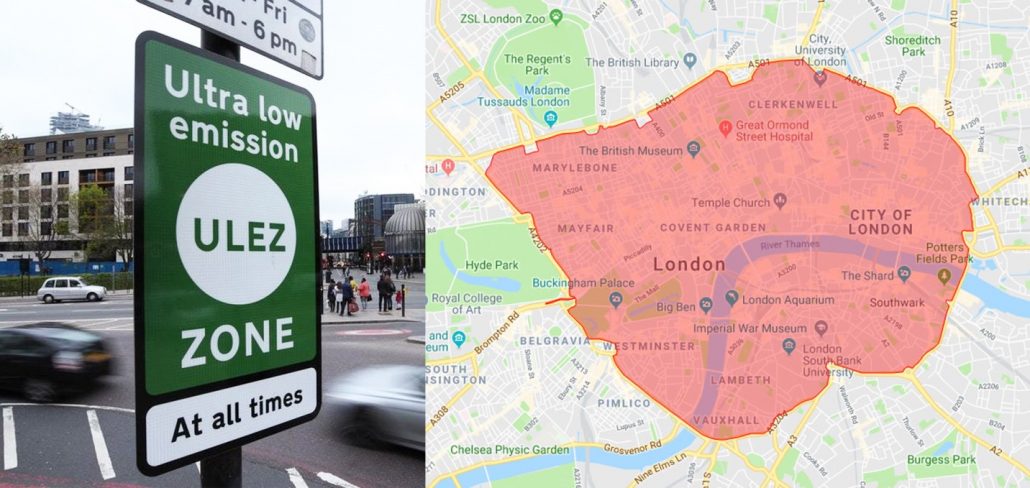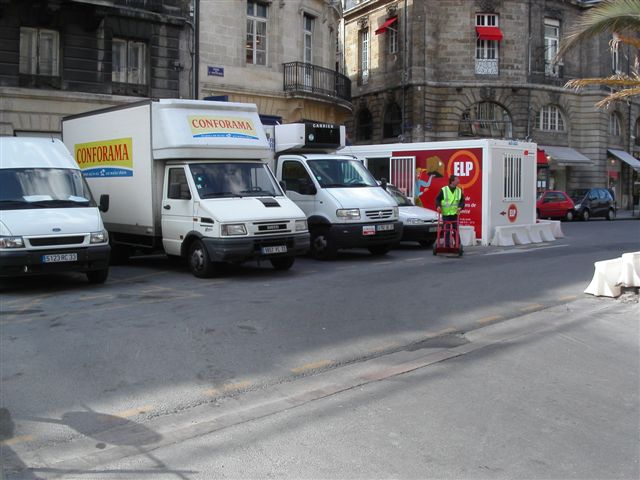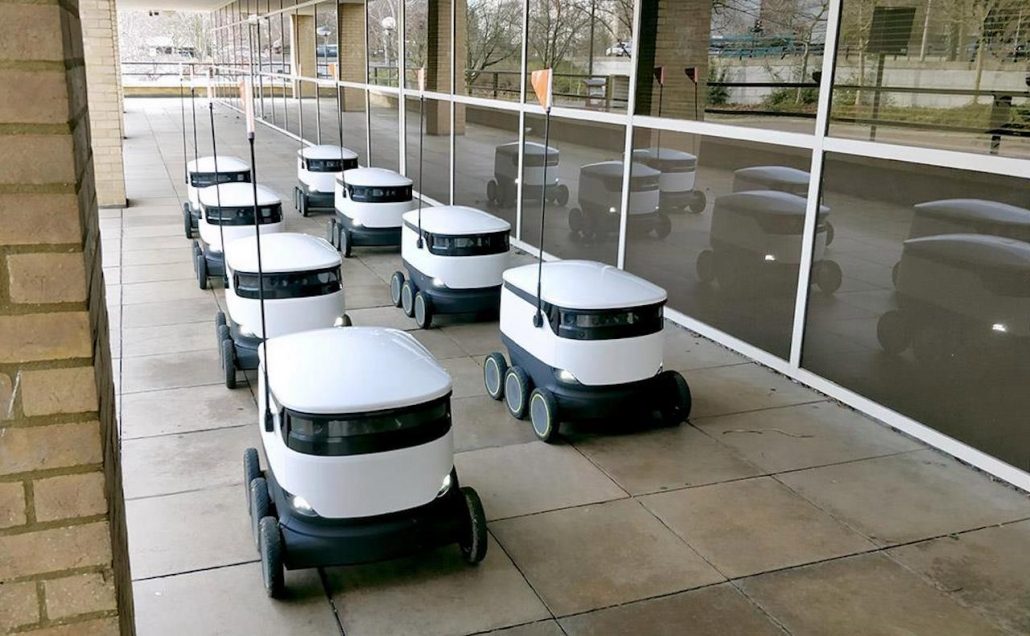This blog post is a part of a series on urban logistics for cities.
21 October 2020


This blog post is a part of a series on urban logistics for cities.
21 October 2020
What Cities can do?
Cities across the world have been experimenting with different initiatives to improve the efficiency of last-mile deliveries and make it sustainable, but there is no “one for all” solution available. Cities differ in logistics needs and requirements due to specific local characteristics, population, area, geography, land-use, road networks, as well as demand and supply of goods. The objectives for sustainable urban freight transport development is to reduce air & noise pollution, traffic congestion, GHG emissions and improve road safety by doing necessary interventions, while also promoting the use of environmentally friendly transport modes, such as rail and water transport and renewable energy-based light road vehicles.
All interventions discussed below are recommended for coordinated implementation involving all stakeholders since many of them are mutually supportive of each other. Stakeholder coordination greatly strengthens the chance for successful implementation, notably through reduced risks and increased buy-in by both all actors involved.
This blog highlights successful interventions which have yielded positive outcomes, They can serve as a positive example to other cities. Local governments from the Global South can take inspiration from mentioned practices but will need a local contextualization before replication. Interventions are categorized in four areas as discussed in part-1 of this blog post.
A. Policy-based interventions
Low Emission Zones (LEZs) are demarketed areas/zone within an urban area where certain regulations are placed to stop the entry of polluting vehicles, e.g. vehicles with higher emissions. In some low emission zones, the more polluting vehicles have to pay more if they want to enter. It is also known as the Green zone or environmental zone in other countries. Low emission zones are in discussion in several European cities and have been implemented in many cities. LEZs are already in practice in over 250 cities and evidence suggests that it helps in the reduction of air pollution especially NOx concentration. Indirectly, it also regulates the traffic congestion in cities. Moving forward LEZs should aim to be turned into Zero Emission Zones (ZEZs) complementing policies to promote walking, cycling, and switch to renewable energy-based electric vehicles; public transport, shared taxis, private vehicles, and delivery vans.
>> The case of London
The LEZ has been implemented since February 2008 in London. The LEZ covers most of Greater London, following the Greater London Authority boundary on a 24/7 basis, all year long. It encourages the most polluting heavy diesel vehicles driving in London to become cleaner. Starting on 8 April 2019, an Ultra Low Emission Zone (ULEZ) is in effect, with stricter emission standards (EURO V/VI) targeting both diesel and petrol vehicles in central London.

The Off-hour delivery (OHD) program focuses on shifting truck deliveries from peak periods to off-hours or at night. Such deliveries are either attended by on-site staff or unattended and delivered at secured storage facilities with keys available to the driver. OHD can result in a wide range of benefits, not only for businesses but also suppliers and the City as a whole. Overall traffic congestion is less as trucks are not travelling at the same time as commuters and bus riders, lesser double parking and improved safety as trucks are not making journeys in peak pedestrian and bicyclist travel time. Overall emission is also reduced as the idling time is reduced. There is also an improvement of neighborhood aesthetics as trucks are not seen parked everywhere.
The reduction of noise generated by deliveries and the promotion of night (or early morning/late evening, Off/ staggered hour) deliveries are a new target of urban freight policies. Some cities implement a policy combining the promotion of silent equipment and noise regulations. Studies have shown that companies can save up to 30% in delivery cost and 25% in diesel consumption. This program is now being tested and replicated in many European cities including Barcelona, Dublin, Paris.
>> The case of New York
In New York, the following benefits were observed; for transport companies: reduced transit time, fuel cost and delivery cost, less parking tickets, efficient deliveries, more predictable delivery window, improved truck utilization; for good receivers: goods are delivered outside business hours, more certainty on truck arrivals allowing a smooth business environment. A truck that travels 10 miles delivering from customer to customer would save 1.25 hours per tour shifted to the off-hours.
Loading and unloading zones are critical for efficient freight movement. It reduces urban transport times and costs of last-mile operations, improves planning, as well as for the improvement of city sustainability, road safety, and livability. A dedicated urban space for freight loading/unloading will avoid delivery operations on traffic lanes or sidewalks, and curb congestion and traffic accidents.
>> The case of Paris
In Paris, the transport department’s guideline imposes a minimum of one delivery bay every 100 meters in the city streets. Provisions of such spaces are made part of the land-use plan and building bylaws in Paris. E.g. for a retail business with a floor area of more than 500 sq.mt. Sufficient and appropriate locations must be reserved on that land for all the loading/unloading and handling operations.
B. Infrastructure based interventions
Nearby delivery areas, or vicinity unloading, consist of designated loading/unloading zones for goods vehicles located nearby one or many drop-off points. Freight vehicles are allowed to park in the spaces for a limited amount of time, from where the goods are then carried over a short distance to the delivery points using non-motorized means such as carriers, carts/trolleys, or cargo bikes. Space is controlled by an entity independent from the delivery companies, and it includes a small facility with micro-storing space and specific handling material for delivery. A team of dedicated personnel is there to assist for free for the dispatching of the goods in the nearby destinations. Consolidating loading/unloading activities together is more efficient and safer, and it also reduces distances travelled by delivery trucks. Having several small spaces dedicated to unloading can be challenging; for instance when it comes to regulation and implementation.
>> The case of Bordeaux
In 2003, Bordeaux metropolitan authority together with the chamber of commerce and freight operators collaborated to create a system to ease the delivery of goods in the city center, Espace de livraison de proximité – ELP (nearby delivery areas). It is an urban transshipment platform; a dedicated space assisted by dedicated personnel for loading and unloading of goods to make the final delivery to nearby shops/businesses. Goods are transferred from incoming vehicles to trolleys, carts, electric vehicles for the last distribution leg from this point. It resulted in a success story for delivery companies as it offered a guaranteed space close to the commercial area.

Pick up points/Parcel lockers are local collection and distribution depots, or boxes, from which consumers can pick up goods they have ordered via mail order or on the internet. They provide an innovative and technology-intensive alternative to home deliveries. Delivery companies save on transportation costs, whereas customers have freedom of picking up as per their convenience and the urban area is free of traffic congestion, air & noise pollution, and GHG emissions caused by the delivery trucks.
>> The business case of pick-up points
Recently amazon partnered up with thousands of small shops (Kirana stores) in India as neighborhood pick-up points. Customers can pick up or send the parcel/post at such pick-up points and delivery companies deliver or pick it from those locations based on optimized routes suggested by technology. In Germany, DHL offers an automated locker bank “Packstation” as an additional service provided to their customers. Packstations are placed at convenient central locations e.g. main train station and are accessible 24×7. As multiple parcels can be placed in a Packstation at any one time, it saves additional journeys, making it a sustainable service that reduces both traffic and carbon emissions. Finding a suitable location might be challenging with the scarcity of urban spaces. SEUR part of DPD group has opened around 14 dedicated pickup points across cities in Spain to optimize the last-mile delivery. Since 2011, the Municipality of Beijing has partnered with the association of express services to create an initiative, ‘City 100’. It acts as consolidation points for multiple couriers and for the final delivery of the last 100 meters carried out by City100 personnel. It is now being expanded to other cities. (Jian & Liu, 2015)
Urban consolidation centres (UCCs) is a logistics facility situated in relatively close proximity to the geographic area that they serve (be that a city centre, an entire town, or a specific site such as a shopping centre), to which many logistics companies deliver goods destined for the area. From these facilities, consolidated deliveries are carried out within that area; often, a range of other value-added logistics and retail services can be provided (Allen et al., 2007; Gogas and Nathanail, 2017). It aims at providing a specific service of bundled and coordinated deliveries. The objective is to serve the city with fewer vehicles that are better loaded and make less frequent deliveries to each recipient. Often, these vehicles run on natural gas or electricity in order to lessen the environmental impact of the new system. As a result of UCC, there are fewer freight vehicles running in an urban area which means a reduction in air and noise pollution, GHG emissions, traffic congestion, and traffic accidents. One of the notable drawbacks of UCC is that it increases traffic around its location, therefore choosing a location for UCC is very critical. A successful UCC requires participation from all receivers of the city who requires time-bound deliveries and support from local governments implementing stringent policies to regulate heavy vehicles.
>> The case of Binnenstadservice
In the Netherlands, Binnenstadservice (BSS) or “inner-city service” runs UCCs for over a decade now; started in 2008 in the Dutch city of Nijmegen. The business model of BSS differs from other UCC initiatives as it focuses on receivers and not on carriers. It also offers free basic services to the small and independent retailers, since their deliveries are usually not optimized, in contrast to those of retail chains. BSS also offers additional services which can be purchased by the retailers, e.g. Storage (so that retailers no longer have to use their shop to store goods or rent storage space elsewhere), Home-deliveries (for example for large goods, such as fridges and computers), Value-added logistics including reverse logistics (of for example clean waste), BSS is now present in 15 Dutch cities. A study from 2010 by TNO on two retailers using BSS calculated that, based on different scenarios, carriers and shippers could save between 48-72% in kilometers travelled by their vehicles; cut delivery times by 60-70%; reduce costs by 59-71%; and lower their CO2 emissions by 47-71%.

C. Technological interventions
Dynamic routing system: More efficient freight transportation solutions may be achieved through innovative implementations of technology. Use of real-time traffic data, as well as information on roads and local land use, to make decisions on truck routing. When connected to commercial vehicle operation systems, these Intelligent Transportation Systems can optimize fleet management and performance. Dynamic routing can increase fleet operations efficiency, improve reliability, as well as reduce congestion and operational costs. It can also lead to a reduction in fuel consumption. That being said, it does require available real-life traffic information and high investments.
Environment-friendly delivery vehicles: Growing e-commerce and stricter regulations put up by cities have provided a boost to environment-friendly delivery vehicles, in some cases powered by renewables.
>> The business case of environmental friendly delivery vehicles
Electric vehicles have been adopted by many delivery companies; notably Bubble post’s cargo bikes in Brussels, Cubicycle by DHL, DPD’s TRIPL, Netherland posts’ Stints, UPS electric vehicles amongst many. Technological advancements are also pushing for engines with fewer pollutant emissions (EURO V/VI), as well as improving fuel efficiency.
Low touch technology: This might be the future of deliveries from a technological point of view which might be accelerated by COVID-19, like drones and self-driving delivery robots.
>> The case of self-driving delivery robots
The company ‘Starship robots’ uses an autonomous bot that can carry items of weight up to 10kgs within a 6-kilometer radius. Their delivery platform enables a new business model for deliveries at a much-reduced cost compared to traditional delivery systems. It is electric-powered so a clean and green solution for businesses. Though it promises socio-economic and environmental benefits, the working viability will be tested in the coming future. Currently, it is being used for food deliveries and small parcel deliveries. COVID 19 pandemic has created a need for contactless deliveries. Starship services are expanded to a grocery delivery in Washington, D.C due to pandemic. The business development head stated that the demand for contactless deliveries is increasing and expect their services will be expanded to other cities soon.

D. Behaviour and awareness based
Eco-driving training: It looks at improving drivers’ behaviours on the road to improve delivery efficiency, load factors, energy consumption, and safety on the road. Training is provided by qualified instructors, with defined objectives, presentations, vehicle checks, driving assessments, and demonstrations, as well as tests and debriefing sessions. A rewarding scheme can also help to increase drivers’ motivation. It requires good coordination between multiple stakeholders, from the public and private sectors, as well as the creation of a certification program. The sum of these components can lead to some important capital investments, therefore parties should take this into account when adopting their strategy. Eco-driving can also increase safety for all road users, which is important considering that trucks are implicated in a significant amount of deadly and major accidents every year on our roads. Most transportation companies are not aware of the benefits coming from sustainable fleet management and eco-driving or lack the expertise to put it into practice.
That being said, most companies are interested in fuel-saving initiatives and would be willing to implement them if they had the resources to do so. It has been increasingly applied across many countries in recent years to reduce high GHG emissions from the transport sector. On average 8-10% fuel is saved after implementing eco-driving practices.
Freight quality partnership (FQP)/ Multi-stakeholder partnership: The urban distribution of goods is organised by different private stakeholders with diverse interests (retailers, wholesalers, freight operators, warehousing companies, residents, shoppers, and workers), operating in an environment, the urban space, which is managed by local governments. For an efficient policy implementation, it is required to have a common consultation platform.
>> The case of FQP
FQPs were launched by the Freight Transport Association (FTA) in 1996 in the United Kingdom (UK) as an approach to create freight transport partnerships between the public and private sectors. The main objectives of FQPs are to identify problems perceived by each interest group relating to the movement and delivery of goods in their city, as well as to identify measures within the group’s competence to resolve or alleviate such problems. It also identifies best practice measures and principles for action by local government and industry to promote environmentally sensitive, economic, and efficient delivery of goods in towns and cities. Many private and public partnerships similar to FQP have been established in many countries; Netherland, Canada, USA, Colombia.
References
https://www.eltis.org/resources/tools/good-practice-urban-freight
http://www.bestfact.net/
http://www.bestufs.net/index.html
https://civitas.eu/
www.starship.xyz/
www.tripl.com